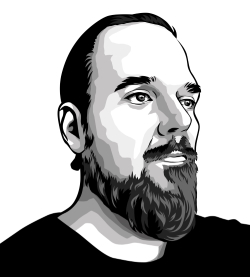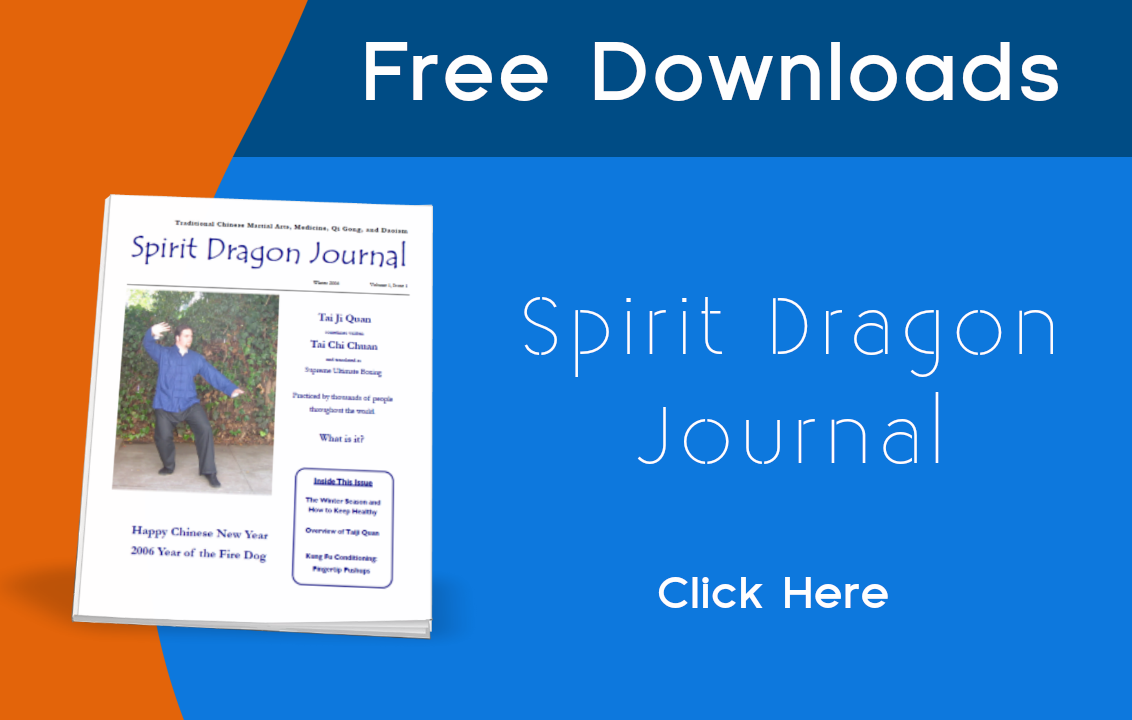There are many different ideas and approaches to stretching. In this article I will attempt to discuss several of them and also share some of my research on the subject of stretching.
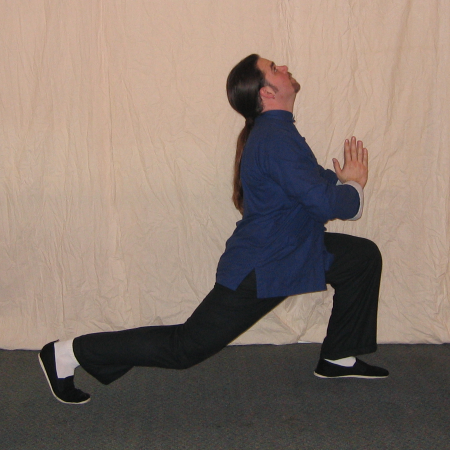
Franklin Fick - Kung Fu Stretching - Lunge
There are two main schools of thought on stretching-
- stretching is not necessary in and of itself
- stretching is vital for improved performance and injury prevention
The first school of though says that stretching is not important. People who advocate this position usually cite as evidence that in any encounter where you will be forced to defend yourself, you will not have time to warm up or stretch. You will have to go in cold, or go from 0 to 60mph at the drop of a hat. So training must mirror what will happen on the street. You should train your skill like you will use it.
The second school of thought believes that stretching is of the utmost importance. They will site research and anecdotal information stating that stretching improves blood flow, keeps the tissue and joints flexible, reduces the build up of lactic acid (speeds up recover time), prevents adhesions, and can reduce the risk of injury.
In truth, both ways of thinking are correct. In actual practice either side of the spectrum will not produce optimum results and would be too narrow minded, thereby stunting the potential for full development. A middle path is much more effective.
So what is this middle path? Most movements and forms training in the martial arts do not require a lot of stretching and warmup to preform, unless your style utilizes a lot of high kicks and/or low stances. Usually you can go light on the movements at first until the body is warmed up and then go at full bore.
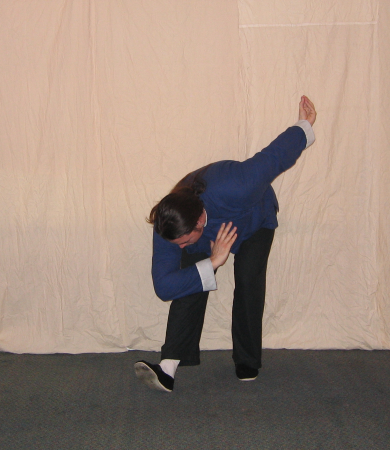
Franklin Fick - Kung Fu Stretching - Leg
Actually going through the movements of your art can create a natural flexibility in the body. For example, most of the basic trainings for the Five Family Southern Shaolin is done from a Horse Stance or transitioning from a Horse to a Forward Stance (I would be talking about the breathing exercises and the basic hand techniques). Practicing these aspects of the style over time will loosen up the hips. Over time the hips will get more flexible and will be able to do the movements to a greater degree of movement without a warm up. In other words, the body will adapt to the training and over time the flexibility needed to do the movements will be developed and gained.
So where does stretching exercise fit into a training regimen? Stretching as an exercise is good for many things including: becoming more flexible, increasing the range of motion (if the limitation is not due to a structural issue), good health (circulation and free flow of Qi and blood), decreased recovery time from strenuous exercise, injury prevention, etc. Stretching can be used for a warm up, cool down, or as a workout in and of itself. Stretching takes the tissues of the body and works to loosen and elongate them, thereby creating a more subtle and flexible body.
Stretching should not be confused with joint mobility or joint loosening exercises- these movements fluidly take the joints through ranges of motion and work to lubricate and maintain the mobility of the joints. Sometimes there is a blurry line between stretching and joint mobility- especially in some Dao Yin exercises where movement and twisting is combined with stretching (it is sort of like the best of both worlds on the physical level).
Here are some general tips for getting the most out of your stretching routine:
- Try not to stretch cold muscles- warm up first (this is not an issue when stretching at the end of a workout session)
- If you feel pain something is wrong
- Don't bounce or strain
- Relax
The Stretch Reflex
First, the stretch reflex is when you muscle tightens up to prevent your joint from going into a position that you body does not have the strength or control to come out of. The stretch reflex basically defines your limit of flexibility. Notice it has nothing to do with how tight the muscle is. It is a protection mechanism. You body protects itself from over extending.
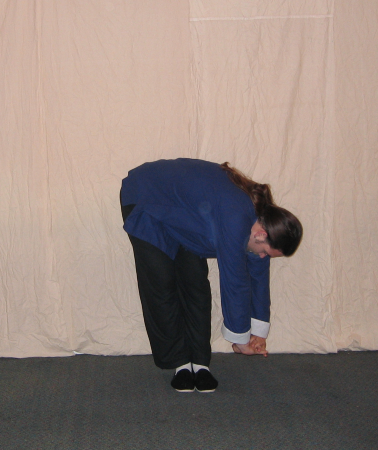
Franklin Fick - Kung Fu Stretching - Leg
Of course, sometimes the muscles are tight, but for the most part the limit of your flexibility is determined by when the stretch reflex kicks in. It is there to protect you.
To improve your flexibility you need a combination of flexibility and strength. Normal stretching will develop the strength of the muscle at he extended position over time just by the action of going into and coming out of the stretch. But this process can be very slow. Modern exercise science has some faster ways to increase the flexibility of the body. Some methods include contracting the stretched muscle to increase the strength at the extended or lengthened position, thereby telling the body that it is ok to be in the extended position and nullifying the stretch reflex (making it go a little farther). Some of these methods can be used to dramatically increase the flexibility in a short period of time and the drawback of some methods is they can be quite extreme. Because you are using force there is more danger of injury.
In traditional training there are many methods to improve the flexibility. Traditional stretching sets that I am familiar with include movements to strengthen the muscle through its whole range of motion, relaxing into the extended positions, movements and twisting from the extended positions, and dynamic motions that balance out the passive exercises and further help to strengthen the muscles in their extended positions.
How how do you get started in your stretching adventure?
Well if you already train a martial art, you probably have loads of exercises to do, hint look at some of the warm-up stuff that you might have over looked as you were anxious to jump into the fighty stuff of your art. Train the movements of your art to gain strengthen and natural flexibility.
You can try Qigong. Many Qigong exercises work to gently stretch and strengthen the body. Dao Yin has many exercises that resemble Yoga.
There are many books on stretching and Yoga (and anatomy). Study to increase your knowledge.
As you study and train things will go in cycles. Sometimes you will emphasize certain aspects of your training (such as stretching) and neglect others, and in time the emphasis will reverse, creating the ebb and flow that we see everywhere in nature. It is not possible to develop all things at the same time. Be natural in your approach, listen to your body, enjoy the experience, and grow and develop. That is the best way.

